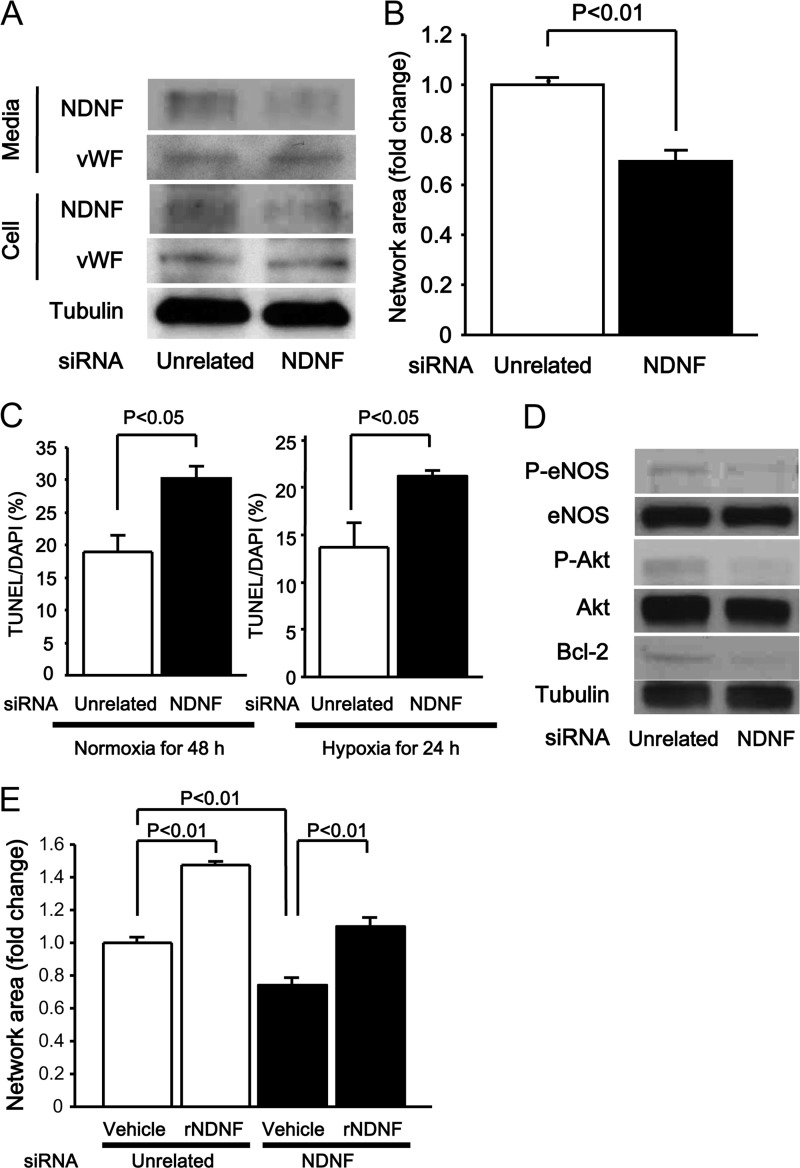FIGURE 5.
Role of endogenous NDNF in endothelial cell responses and signals. A, NDNF protein expression in medium and cell lysates from HUVECs. HUVECs were transfected with siRNA targeting NDNF or unrelated siRNAs. Protein levels of NDNF and von Willebrand factor (vWF) were determined in medium and cell lysates from HUVECs by Western blot analysis. B, effect of NDNF knockdown on HUVEC network formation. After transfection with siRNA targeting NDNF or unrelated siRNAs, HUVECs were seeded on Matrigel-coated dishes. The quantitative analysis of the network area is shown. n = 4 in each group. C, effect of NDNF ablation on HUVEC apoptosis. HUVECs were transfected with siRNA targeting NDNF or unrelated siRNAs for 24 h, followed by subjection to serum deprivation under conditions of normoxia for 48 h or under conditions of hypoxia for 24 h. Apoptosis was assessed by TUNEL staining. The quantitative analysis of TUNEL-positive HUVECs is shown. n = 4 in each group. D, effect of NDNF knockdown on phosphorylation signals and Bcl-2 expression in HUVECs as determined by Western blot analysis. E, reversal effect of NDNF on HUVEC network formation induced by NDNF ablation. HUVECs were cultured on Matrigel-coated dishes in the presence of recombinant NDNF protein (rNDNF) (200 ng/ml) or vehicle for 16 h after transfection with siRNA targeting NDNF or unrelated siRNAs. n = 4 in each group. P-eNOS, phosphorylated eNOS at Ser-1777; P-Akt, phosphorylated Akt at Ser-473.

